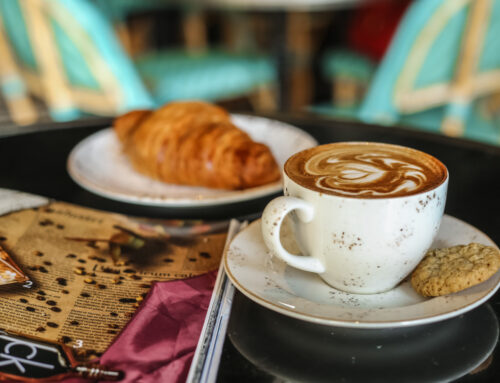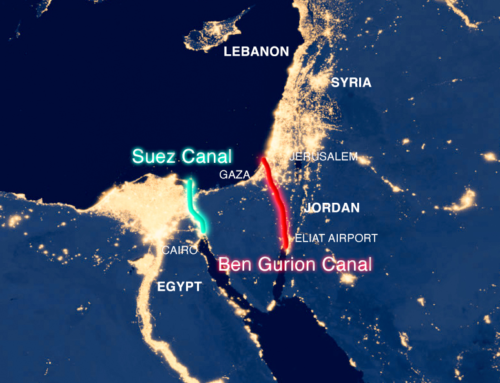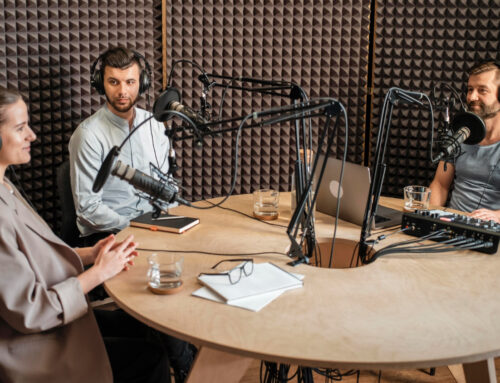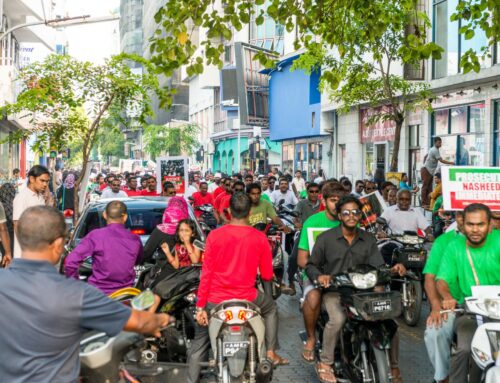Words by Jumana
Tinged with maroon and reds, the sky appeared sullen and moody as the vessel finally made landfall. It will soon be the full moon. It had been months since he left the winding water streets and hustle and bustle of the coast of Basra (southern Iraq) on a vessel headed towards Sindh(India), Ṣīn(China).
The last time he had made this trip was about a decade ago when he had learned some of the language and the people had appeared more lively and cheerful. “What troubles cast their shadow today?”, he asked his benefactor in Male’. “Best not speak of what one cannot change”, the man said darkly.
Nearly all Maldivian children have the memory of hearing the legend of “Rannamaari” and its defeat at the hands of of a muslim merchant of Tabriz. We all took part in , or watched the stage as play after play paid homage to the story. The happy ending was always that “the King sent emissaries and Maldives embraced islam”. “The Day Maldives embraced Islam” has been celebrated since 2 Rabi’ul Akhir 1374 (1954) with a short interim of 14 years until it resumed in 2000. But was it really that simple? At Ka-Leo we ventured across the line between myth and reality; behind the events that began 896 years ago and shaped the Maldivian identity for almost a millenia.

Small statues found by Thor Heyerdahl’s expedition in Maldives
Source: Kon-Tiki museum via Najih Didi
Yusuf Al Thabreyzee made his way to accommodations as directed by the man in the harbor. The crew of the ship will find their way to him after bathing and feasting in nearby islands. As he entered the humble home of clay and thatched roofing, he was absentmindedly provided an urn of well water to freshen himself with and a meal of banana, dried fish, coconut husk and tender coconut water. Children played in the vast ‘goathithere’ (yard) while a girl of about 12 or 13 sat alone, looking miserable and isolated. He later found that her name was Avita (meaning: life).
Upon the death of the legendary Soma Vansa King Mahábharana Maharadun, most famous for quelling the Chola rebellion in northern Maliku and Thiladhummathi, his wise and kind nephew Sri Thribhuvana Adhitiya Maháradhun assumed the throne of Maldives in 1142 CB. According to some Radhavalhi (list of rulers in Maldives), he was the second Theemuge Maha Kalaminja or “Dhovemi” as referred to by historians; and certainly the last Buddist King of Maldives.

Ruins of Buddhist temple ‘Bunbera’ in Hadhdhummathi Gan 1922 by H.C.P Bell
Source: Maldives Insider
The journey of “Dhovemi” to “Dharumavantha Rasgefaan” began after the arrival of a foreign scholar to the shores of Maldives – about 12 years into his reign. Ibn Batuta later claimed that the traveler was of “Maghribi” or Moroccan origin. This hafiz (one who has by-hearted the holy Quran) was known in the trickles of sands of time as “Thabreyzugefanu” or the “holy man of Tabriz, Iran”. A state-annointed mid-twentieth century History Committee settled the matter as well as the debate surrounding his name and arrived on “Abul Barakath Yousuf Al Barbaree”.
It was later that week when he heard the commotion outside and found that the lady of the house had fainted and was being carried in by some young men. Avita sat motionless and wide-eyed as the townspeople spoke in hushed voices. They explained the merchant from Tabriz that the Male’ coast had been haunted by a sea demon ‘Rannamaari’ for many months now, and that it was only the sacrifice of a young virgin on the full moon at the main temple that kept the demon from wreaking havoc and devouring the townsfolk. Tonight was to be the next sacrifice, and the king’s men had chosen young Avita.
However the King was convinced to convert, facts of history dictate that the he announced that his household and all of his Ministers will embrace the religion of Islam in Rabi’ul Akhir 1153 CE. The wooden plaque “Shihabuddheen Fila”, adorning the white stone of Hukuru Miskiy names this King, Sultan Dharmishtha Mubammad bin Abdullah with “Dharmishtha” meaning “just, pious and righteous”; hence the name Dharumavantha Rasgefaanu. The wooden plaque was installed as part of the renovating the Friday Mosque during the reign of Sultan Ahmed Shihabuddin in 1338 where it revealed that the mosque was built by Al Vazeeru Shaniviráza on the orders of Dharumavantha Rasgefanu and his brother “Sri Kalo”.

Thoddoo Dhaagaba sarahadhu
Source: Alamy
As for how long it took for all of Maldives to unite under the Shahadha and creeds of Islam, oral tradition reports that it took several years, rulers, battles, excecutions and many a quelled rebellion in the nation of “a thousand and one isles”. It has been passed on from generation to generation that the Sultan sent two ships (one to the north and one to the south) boarded with soldiers and scholars as part of the conversion. Another oral dictation tells of the refusal of the people in Faafu Atoll Nilandhoo that was met with the King himself and his army where a mighty battle ensued. The island is currently home to the nation’s second-oldest masjid Aasari Miskiy built during the reign of Dharumavantha Rasgefaan from the ruins of the Buddhist stupas. Similar to the head found inside the “Rihiveli Goathi” in Thaa Atoll Kin’bidhoo, several well-preserved stone carvings of this period have been found buried, presumably in an effort to conserve the religious artifacts.
Yusuf Al Thabreyzee had a hard time seeing through the blood-red veil that had been drawn before his eyes. He had convinced the people of the household that he will go in Avita’s place. It didn’t take much convincing as the family had earlier lost an even younger daughter to the sacrifice. “What else do we have to loose?” Avita’s father said. Yusuf had therefore made the journey all the way from a fearfully quiet household in the north of Male’ to the western-most point where the temple was located – upon a palanquin provided by none other than the royal household of Male’. When cast into light by the turtle oil lamps, the steps of the monument were revealed to be intricately carved out of limestone and decorated with the stone statues of Buddhist worship. He wondered if he could secure some turtle oil in exchange for some zafran in his rucksack. If all goes well, he may well be alive and well enough to complete the trade. Upon hearing an approach outside the temple, he began his recitation starting from Al Baqara.
According to inscriptions adorning a mosque built by Sultan Ibrahim Iskandhar I on 1632 in Addu Atoll Gan, Dharumavantha Rasgefanu incentivized conversion to Islam by decreeing that those that acceoted the religion willingly will be given ownership of the land they were living on. Any land that belonged to those who resisted will be taken by the State and used to provide for the upkeep of religious establishments within the country.
Isdhoo Lomafaanu stated that after the King reigned for more than twenty-five years, he simply departed to Hajj after Friday prayers without any of his court, never to be seen again. Thabreyzugefánu passed away on 6 Rajab and was laid to rest across from Friday Mosque, within the enclosure of Medhu Ziyaraiy. During the reign of Sultan Muhammad Muhyiddin in 1691, the day was makred as “Naibu Kamai Hin’gun” when the four wards of Male’ saw religious lectures being delivered to the public followed by a ceremony.

Friday Mosque 1900
Source: Najih Didi
Dawn broke against a clear sky as the moon vanished, and the nephew of the legendary Mahábharana Maháradun, Sri Thribhuvana Adhitiya Maháradhun emerged from the temple a new man. The ‘Rannamaari’ was vanquished and trapped in a glass bottle, cast into the sea. Stepping along the ‘Bo’ trees that surrounded the temple, he discussed a new name with the man from Tabriz. He will take on the new name, Muhammad Ibn Abdullah. “A King is called Sultan, therefore you will be Sultan Muhammad Ibn Abdullah”. He felt at peace and determined. Emissaries with gifts will be sent to all the regions under his command. If not through incentives, then through the force of ‘Badi Koshi’ gunners. His wives and children will learn what they can under the guidance of Yusuf Al Tabreze, and Maldives will embrace Islam with open arms, just as he had. He was also excited to humbly make his journey to hajj, as deemed compulsory on all capable muslims.









Leave A Comment